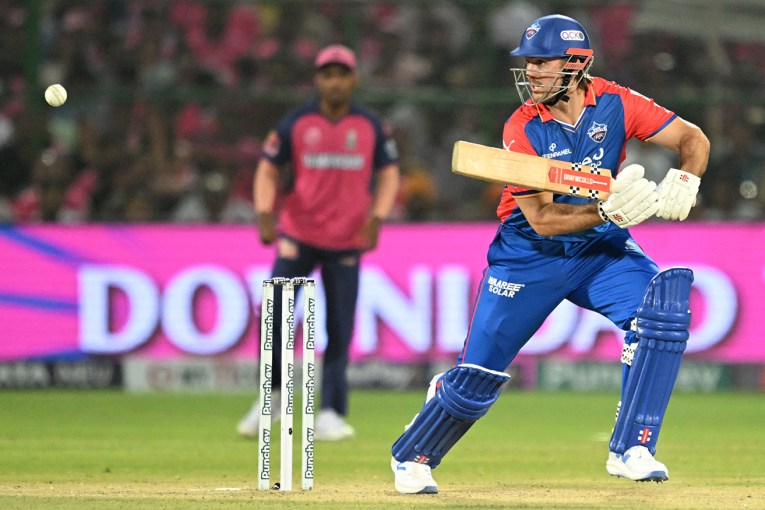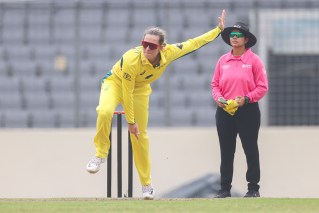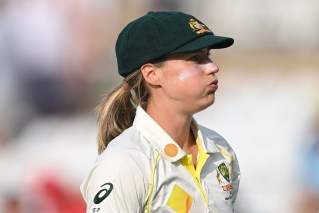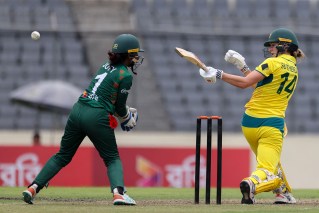One-day cricket still matters, just not too much of it


Getty
I must have had the same conversation at least 20 times over the past year.
Be it with a colleague in the office or a mate at the pub, cricket’s World Cup kept cropping up in conversation. And so did the same answer.
“I’m not that interested. One-day internationals are irrelevant these days, mate. They play too many. It just doesn’t matter anymore,” came the standard response.
• World Cup broadcast guide: all the must-see games
• World Cup: every team analysed, we pick the winner
• The top 10 greatest World Cup moments
While it would be near-impossible to suggest that the cricket calendar could do with more one-day fixtures, I could never cop that the World Cup doesn’t matter. The start of this year’s tournament has proved just that.
More than 84,000 piled into the MCG on Saturday as Australia eased past old rivals England. A huge crowd followed suit for India’s battle with Pakistan in Adelaide while games in Christchurch, Hamilton and Nelson were also well-attended in an excellent start to the tournament.
To be fair, big crowds are expected when Australia play England, or India take on Pakistan. But these games all had one thing in common – meaning.
The saturation of one-day cricket these days robs most regular matches of this, and it is to the game’s detriment.
And even though the World Cup is likely to drag on – it will run for more than six weeks with the group stage lasting over a month – the significance of the clashes should ensure interest levels remain high.

Aaron Finch smashed 135 off 128 balls against England … Photo: Getty
The atmosphere at the ‘G for the visit of the English was electric. This was sports-mad Melbourne at its best.
Having attended the AFL Grand Final and the Asian Cup decider in the past six months, I can honestly say that it compared favourably.
As Australia soared past 300 in the latter overs, the noise lifted and the raucous crowd only got more boisterous in the evening as each England wicket fell.
It took me back to the halcyon days of one-day cricket in the mid-1990s and proved that there still is a market for the format.
The death of the 50-over game has been predicted countless times in recent years, with most arguments falling back on two points.
One being the ridiculously packed fixture schedule and the other focusing on the rise of Twenty20, and how it would make one-day internationals redundant.

… while South Africa’s David Miller was unbeaten on 138 against Zimbabwe. Photo: Getty
But has Twenty20 cricket made one-day internationals better? I think it has.
Batsmen have undoubtedly improved at slogging and hit even more freely now.
Their new array of strokes mean there are no ‘safe areas’ on the ground.
Batsmen can now flick full tosses over third man or fine leg, or switch-hit and reverse sweep at will.
They still have to build an innings in one-day cricket, though, and show patience and temperament, instead of the straight-out smashing that often occurs in a Twenty20 format that, while being entertaining, can also be very formulaic.
Australia’s Aaron Finch (135) and South Africa’s David Miller (138 not out) both made superb hundreds at the weekend. And what made them so good was that they had to work for them.
Finch, who opened, saw Australia fall to 3-70 and played an excellent anchor role that featured plenty of grind before he swung hard in the latter stages.
Miller was under pressure when South Africa slumped to 4-83 against a Zimbabwe side they were expected to comfortably account for.
The 50 overs gave both Finch and Miller a chance to grow into the game, before they showcased the big-hitting skills they honed in Twenty20.
Miller was particularly explosive, smashing 30 off Solomon Mire in the 48th over of South Africa’s innings.
Finch and Miller – initially known as Twenty20 specialists – began their international careers in the shorter format.
Both may never have played international cricket if it were not for the invent of Twenty20, but as their careers have progressed, so have their games. Finch and Miller are now exceptionally competent in the 50-over form and may go on to play Test cricket.
Bowling has also evolved, thanks to Twenty20, with most players possessing better slower balls, yorkers and bouncers, while fielding has continued to improve.
So, if the formats can co-exist, and actually make one-day cricket better at the same time, how does the ICC address flagging interest in meaningless one-day games? The answer is simple. Play fewer of them.

Even Irish fans got in on the act in Nelson, New Zealand. Photo: Getty
Each 50-over series should be capped at a maximum of five matches, with each Test-playing nation restricted to 10 games per year. And with interest in international cricket still minimal in the shortest form, it should be scrapped – bar the biennial world Twenty20.
Twenty20 thrives in the domestic, franchise-based leagues but has not captured the imagination at national level.
With a maximum of 10 matches a year, regular one-day international cricket will regain relevance and importance. It also makes the World Cup stand out as a real feast of cricket.
It seems unrealistic, given the important role TV money now plays in sport, but if the ICC were to stand firm on the issue, they could safeguard the format.
One-day cricket still matters. People still care. And if the game’s saturation can be addressed, it still has a long and healthy future.








